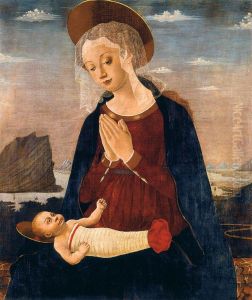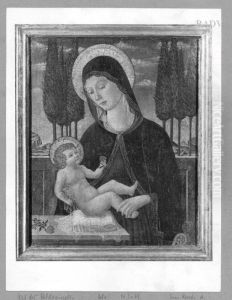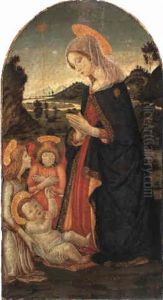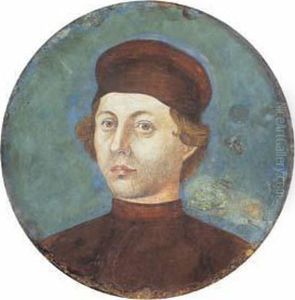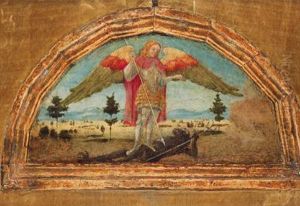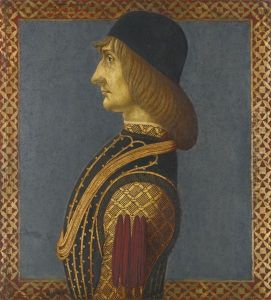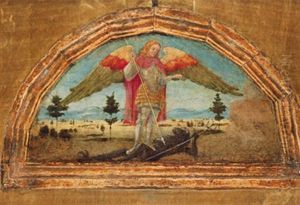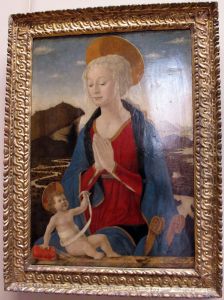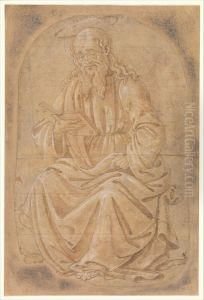Alesso Baldovinetti Paintings
Alesso Baldovinetti, born in Florence in 1425, was an Italian painter of the Renaissance period. He was a part of the Florentine school, which at the time was beginning to break away from the Gothic style and embrace the new artistic ideas that defined the Renaissance. Baldovinetti's work was known for its detailed landscapes and intricate attention to nature, which he rendered with great care and precision.
Baldovinetti trained under the artist Domenico Veneziano, and his style was influenced by the works of his contemporaries, such as Fra Angelico and Masaccio. He was particularly adept at fresco painting, a technique that involves applying water-based pigments to freshly applied plaster. One of his notable fresco works is the 'Nativity' in the cloister of the Santissima Annunziata in Florence.
In addition to religious subjects, Baldovinetti also painted portraits. His approach to portraiture was characterized by a strong attention to detail and a keen observation of his subjects. However, his work in this genre is not as well-documented as his religious paintings.
Baldovinetti's experimentation with oil painting was significant, although his oil paintings did not survive as well as his frescoes. He was one of the first artists in Florence to adopt the use of oil paints, a technique that would later become the standard in European art.
Throughout his career, Baldovinetti was actively involved in the artistic community of Florence. He was a member of the Guild of Saint Luke, the painters' guild in Florence, and he influenced the next generation of artists, including Domenico Ghirlandaio and Sandro Botticelli.
Alesso Baldovinetti passed away in 1499, leaving behind a legacy of work that demonstrates a transitional moment in art history, where the precision of the International Gothic style began to blend with the emerging naturalism that would come to define the High Renaissance. His contributions to the development of landscape painting and fresco techniques are particularly notable in the annals of art history.
